The 31st edition of AABB Standards was effective in April 2018. Fortunately, Pat Ooley, Chair of the BBTS Standards Committee, is here with the Top 5 changes you need to know!

Pat Ooley
Bring on the Expert!
I decided to ask someone who is intimately involved in the process of the development of the new Standards to join me to talk about the five most important changes in the 31st edition. I was really happy to have Pat Ooley, the Chair of the Blood Bank Transfusion Service Standards Committee, with me to share his great wisdom and “insider’s perspective” on this topic. While we talked all about the “Top 5,” Pat also took some time in this interview to help us understand the role of this publication that impacts literally hundreds and hundreds of transfusion and donor facilities in the US and a few international countries. He also walked us through the entire process on how new and revised Standards come into existence.
The Top 5!
Here are the top 5 changes Pat and I discussed in this episode:
- Donor iron management; 5.2.1 (not actually a change but an emphasis)
- Classifying adverse events; 7.3
- Transportation requirements for platelets; 5.1.8A
- Use of Low-titer Group O Whole Blood; 5.15.1
- “Two-sample requirement” for ABO confirmation; 5.14.5 (this one is the most controversial)

Pat Ooley
Bring on the Expert!
I decided to ask someone who is intimately involved in the process of the development of the new Standards to join me to talk about the five most important changes in the 31st edition. I was really happy to have Pat Ooley, the Chair of the Blood Bank Transfusion Service Standards Committee, with me to share his great wisdom and “insider’s perspective” on this topic. While we talked all about the “Top 5,” Pat also took some time in this interview to help us understand the role of this publication that impacts literally hundreds and hundreds of transfusion and donor facilities in the US and a few international countries. He also walked us through the entire process on how new and revised Standards come into existence.
The Top 5!
Here are the top 5 changes Pat and I discussed in this episode:
- Donor iron management; 5.2.1 (not actually a change but an emphasis)
- Classifying adverse events; 7.3
- Transportation requirements for platelets; 5.1.8A
- Use of Low-titer Group O Whole Blood; 5.15.1
- “Two-sample requirement” for ABO confirmation; 5.14.5 (this one is the most controversial)
About My Guest:
Patrick Ooley is the Chair of the AABB Blood Bank and Transfusion Service (BBTS) Standards Committee and is the Senior Corporate Director of Quality for Vitalant (formerly Blood Systems, Inc., or “BSI” at the time of this interview). He is responsible for providing direction and quality oversight for Vitalant field quality management staff for the Blood Services Division including staff at all Vitalant centers and their affiliate, LifeStream. Prior to joining Blood Systems, Pat served as Chief Compliance Officer for the Indiana Blood Center.
Pat is an active participant in the blood banking community. In addition to his duties as chair of the BBTS Standards Committee, he serves on the AABB Global Standards Committee, and the SPC committee. Pat is an AABB assessor, is the past chair of ABC’s Quality Committee, has served on AABB’s COI Task Force, Quality Management Systems subcommittee, Abstract Selection Committee, Annual Program Committee and is a past chair of AABB’s Donor Center Accreditation Program unit.
DISCLAIMER: The opinions expressed on this episode are those of my guest and I alone, and do not reflect those of the organizations with which either of us is affiliated. Neither Pat nor I have any relevant financial disclosures.
Further Reading:
- Questions about Standards: Standards FAQs from AABB
- Article on Apheresis Platelet Quality up to 30 hours of Shipping: Wagner SJ et al. The influence of simulated shipping conditions (24- or 30-hr interruption of agitation) on the in vitro properties of apheresis platelets during 7-day storage. Transfusion 2008;48:1072-1080
Send AABB Your Questions!
- Standards@AABB.org (NOTE: This link will open your email program)




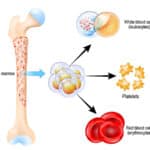

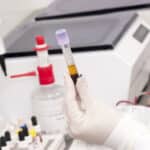



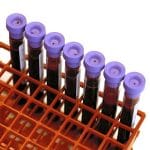

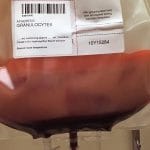
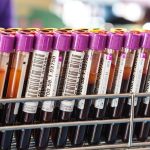
Joe and Pat
You all did a great job and hit some very important points on the 5 top changes in the BBTS standards, 31st ed. Very informative
As always thank you both for your expertise
Wait…KATHY ELDER??? The same Kathy Elder that I knew in my military days? If so, then…WOW! Thanks so much for writing! (and, if not…how embarrassing!).
-Joe
Kathy Elder…as I live and breathe! The single individual who embodied compliance and who made me a young army mlt want to be (and I did become) a med tech, a blood banker and a compliance addict. Most amazing qa I ever knew! The military blood program isn’t the same without you.
Thank you for the interesting podcast.
I worked at a facility that insisted we program the same sample on the Provue for the type, screen, and retype. We were not to ask for another sample. It drove me nuts! I would love to see the option to retest the same sample go away completely.
Can you provide an example of adding clarity and definition around what is meant by a “second current sample” and a “separate phlebotomy event”?
Kristy, as I mentioned in the podcast, I am not a fan of retesting the same sample, but I also recognize that I am not everyone’s medical director. We made this an important point of discussion because I suspect that many facilities are in exactly the position you described (they were meeting the CAP checklist requirement by retesting the same sample), and AABB wants to make it clear that you need a higher standard now.
As for the definitions, Standards is silent on that, deliberately, I think, because every facility has to decide how to define these things. Pat and I discuss this toward the end of the interview. Generally, I think most would interpret those terms to mean “a different sample drawn at a different time during the same pretransfusion event.” Again, though, I can’t tell you what that should mean in your facility. Thanks for writing!
-Joe
for long time we have been using a 2nd sample for confirmation of blood group once established you will feel safe.and at several occasion you can catch a discrepancy due to wrong sample labeling at an early stage
Re the number 1 change: it will be interesting to see how this plays out during assessments. For example, the 3rd possibility of a validated system…such as two individuals identifying the patient at blood draw. I’m fairly certain some facilities will come up with a means of doing this that they “THINK” will be robust enough. I have my own doubts about such a potentially “human error riddled” process.
Thanks for bringing Pat onto your podcast!
Thanks, Pam! I thought Pat was terrific in this episode, and I really liked hearing the background on what the committee was intending with each of the changes. Glad you liked it!
-Joe
Hi Joe! Can you post the website to send questions to the AABB BBTS committee? Thanks!
Thanks for the reminder, Janine! It’s actually an email address, not a website, but the address is now linked just above the comment section (scroll up just a little, and refresh your page if you don’t see it). I had it in the transcript, but forgot to put it here on the show page. My understanding is every email is read and considered, so it’s valuable to ask them your questions.
-Joe
Thank you for this podcast I just became a blood bank lead and the standard 5.14.5 is new to our facility and we are in the process of developing this. We are a midsize hospital with a few occasional traumas and some of our physicians are not excited about a second stick requirement. I would assume we have to be able to define how we are monitoring this as well am I right?
I think that the most important part is getting your initial process explained to your clinical staff in a way that they understand the importance, rather than seeing it as a nuisance or a worthless endeavor. When that happens, inevitably, people will see that, and it empowers staff to try to “cheat” and game the system. You really don’t want to be in an environment where nurses or phlebotomists are drawing an extra tube and keeping it in their pockets in case they need it for a second check (trust me on this), so helping everyone understand the “why” behind it is really important, in my view. Finally, yes, you should monitor this process as you monitor other critical processes in the transfusion service. I wish you the best! Congrats on your new role!
-Joe
Really excellent information shared.
Mentioned somewhere in the podcast that blood warmer is blood bank’s business. So far, at my work, it is nursing’s business. I posted the question to my BB supervisor recently. She said it is not a CAP requirement for BB to oversee blood warmer. Is it only an AABB requirement and not a CAP requirement? I am under the impression that both entities are in sync with each other.
The debate over “who is responsible for blood warmers?” is not a new one (the same discussion happens around the “who is responsible for intraoperative and perioperative blood recovery equipment and processes?”). You’ve already heard where AABB stands, and all I can tell you is that CAP has a checklist item for LAB INSPECTIONS (TRM.41500) that states, “If a blood warming system is used during transfusion, it is properly maintained and equipped with special features to alert the user to improper transfusion conditions.” Clearly, the lab will be inspected by CAP to make sure blood warmers are properly maintained and functioning, so that, to me, suggests some level of lab responsibility for the warmers. Management of local facilities have to decide how to handle that issue, however, so I’m not saying your facility (or supervisor) is wrong. Perhaps there is some other arrangement you are not aware of?
-Joe
Hi, Joe! As always, we learn so much from your podcasts and the great guests you have. My question is regarding the second ABO and RhD typing (the confirmatory or retype): I have seen guidelines where it is specified that for the second sample you just need to perform the direct ABO RhD test, just like neonates. However, according to the AABB standards it appears to be mandatory to perform direct and reverse ABO typing for all samples. I’d like to know your view on this matter and Pat’s too if possible. Do you think this should be a medical director’s decision?
In our facility ,we have a tradition to do phlebotomy for blood banking in the presence of patient attendant and then send it to blood bank by hand through the attendant who is asked to deliver the sample to the bench guy and get blood testing in front of him and give him a small paper slip with abo and rhd written,and when blood arrives at bedside the same attendant is asked to check the group and show his slip ,the nurse confirms both are same groups and the transfusion begins.By doing this practice the audit showed more than 10000 transfusions in a year without any error.